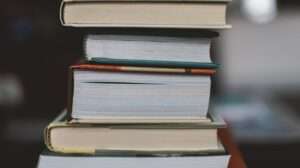Emily Dickinson, one of America’s most celebrated poets, remains an enigma to this day. Born in 1830 in Amherst, Massachusetts, Dickinson lived a reclusive life and rarely left her family home. She wrote nearly 1,800 poems during her lifetime, but only a handful were published while she was alive. It was not until after her death in 1886 that her work gained recognition and she became known as one of the greatest poets of the 19th century. Despite her literary success, much about Dickinson’s life remains a mystery. Understanding her life and the influences that shaped her work is crucial to fully appreciating her contributions to American literature.
Early Life and Education of Emily Dickinson
Emily Dickinson was born into a prominent family in Amherst, Massachusetts. Her father, Edward Dickinson, was a lawyer and a respected member of the community. Her mother, Emily Norcross Dickinson, was a homemaker and deeply religious. Dickinson had two siblings, Austin and Lavinia, with whom she had a close relationship throughout her life.
Dickinson’s education began at Amherst Academy, where she excelled academically. She was known for her intelligence and love of learning. However, her formal education ended when she enrolled at Mount Holyoke Female Seminary (now Mount Holyoke College) in 1847. After just one year at the seminary, Dickinson returned home to Amherst for reasons that are still unclear.
During her early years, Dickinson was influenced by the writings of Ralph Waldo Emerson and Henry David Thoreau, both of whom were prominent figures in the transcendentalist movement. Their ideas about nature, individualism, and spirituality would later find their way into Dickinson’s poetry.
The Dickinson Family and Their Influence on Emily’s Life
The Dickinson family played a significant role in shaping Emily’s life and work. Her relationship with her father was particularly important. Edward Dickinson was a stern and demanding figure, but he also recognized his daughter’s talent and encouraged her writing. He provided her with books and resources, and even built a writing studio for her in the family home.
Emily’s relationship with her mother was more complicated. While her mother was supportive of her writing, she also had high expectations for Emily to conform to societal norms. This tension between creativity and convention can be seen in Dickinson’s poetry, which often explores themes of individuality and rebellion against societal expectations.
Dickinson also had a close bond with her siblings, especially her brother Austin. They shared a love of literature and often discussed poetry together. Austin’s wife, Susan Gilbert Dickinson, also played a significant role in Emily’s life. Susan was Emily’s closest confidante and the recipient of many of her letters and poems.
Emily Dickinson’s Writing Career: Poetry and Letters
| Category | Metric |
|---|---|
| Poetry | Number of poems published during her lifetime |
| Poetry | Number of poems published posthumously |
| Poetry | Number of poems in total |
| Poetry | Themes explored in her poetry |
| Poetry | Influence on modern poetry |
| Letters | Number of letters written |
| Letters | Recipients of her letters |
| Letters | Themes explored in her letters |
| Letters | Influence on modern letter writing |
Emily Dickinson’s writing career spanned over three decades, during which she produced nearly 1,800 poems. However, only a handful of her poems were published during her lifetime. After her death, her sister Lavinia discovered hundreds of poems in Dickinson’s bedroom, which were then published by friends and family members.
Dickinson’s poetry is characterized by its unique style and unconventional use of punctuation and capitalization. Her poems often explore themes of love, death, nature, and spirituality. They are known for their brevity and their ability to convey complex emotions in just a few lines.
In addition to her poetry, Dickinson also wrote hundreds of letters to friends and family members. These letters provide valuable insights into her life and work. They reveal her wit, intelligence, and deep emotional connections with those closest to her.
Emily’s Unique Writing Style: Analysis and Interpretation
Emily Dickinson’s writing style is often described as innovative and ahead of its time. Her use of dashes, unconventional capitalization, and fragmented syntax challenged the traditional norms of poetry. Dickinson’s poems are often short and concise, yet they convey profound emotions and complex ideas.
One of the key features of Dickinson’s writing style is her use of imagery and metaphor. She often used nature as a metaphor for human emotions and experiences. For example, in her poem “Hope is the thing with feathers,” she compares hope to a bird that sings in the face of adversity.
Another recurring theme in Dickinson’s poetry is death. She often explored the idea of mortality and the afterlife, reflecting on the transient nature of life and the inevitability of death. Her poems on this subject are both haunting and thought-provoking.
Dickinson’s writing style has been compared to that of other poets of her time, such as Walt Whitman and Edgar Allan Poe. While Whitman celebrated the individual and embraced the vastness of the world, Dickinson focused on the inner world of the individual and explored the complexities of the human psyche. Poe, on the other hand, delved into themes of darkness and despair, while Dickinson’s poetry often contained a glimmer of hope.
Emily’s Relationships: Friends, Family, and Romantic Interests

Despite her reclusive lifestyle, Emily Dickinson had several important relationships throughout her life. She had a close circle of friends, known as the “Amherst literary circle,” who were fellow writers and intellectuals. They included Thomas Wentworth Higginson, a writer and abolitionist, and Helen Hunt Jackson, a poet and novelist.
Dickinson also had a number of romantic interests throughout her life, although it is unclear if any of these relationships were ever consummated. One of her most significant romantic interests was Reverend Charles Wadsworth, a married man whom she corresponded with for many years. Their letters reveal a deep emotional connection, but it is unclear if their relationship was ever more than platonic.
Emily Dickinson’s Health and Mental State
Emily Dickinson’s health and mental state have been the subject of much speculation and debate. She suffered from various physical ailments throughout her life, including severe headaches and eye problems. Some scholars believe that these health issues contributed to her reclusive lifestyle and her decision to withdraw from society.
In addition to her physical health, Dickinson also struggled with mental illness. She experienced periods of depression and anxiety, which are evident in her poetry. Some scholars have suggested that she may have suffered from bipolar disorder or agoraphobia, although there is no definitive evidence to support these claims.
Despite her struggles with mental illness, Dickinson was able to find solace in her writing. Her poetry became a form of therapy and self-expression, allowing her to explore her innermost thoughts and emotions.
Emily’s Legacy and Influence on American Literature
Emily Dickinson’s legacy is undeniable. Her poetry has had a profound impact on American literature and continues to be studied and celebrated today. Her unique writing style and exploration of complex themes have inspired countless poets and writers.
Dickinson’s influence can be seen in the work of modernist poets such as T.S. Eliot and Wallace Stevens, who were drawn to her innovative use of language and imagery. Her poems have also been set to music by composers such as Aaron Copland and Samuel Barber, further cementing her place in American culture.
Controversies Surrounding Emily Dickinson’s Life and Work
Despite her literary success, Emily Dickinson’s life and work have not been without controversy. Some critics have dismissed her poetry as overly sentimental or lacking in depth. Others have questioned the authenticity of her poems, suggesting that they were heavily edited or even written by someone else.
In recent years, there has been a renewed interest in Dickinson’s life and work, leading to new debates and controversies. Some scholars have argued that Dickinson was a lesbian and that her romantic interests were actually women, including her sister-in-law Susan Gilbert Dickinson. Others have questioned the accuracy of the popular image of Dickinson as a reclusive spinster, suggesting that she may have had a more active social life than previously believed.
The Unraveled Enigma of Emily Dickinson’s Biography
In conclusion, Emily Dickinson’s life and work continue to captivate readers and scholars alike. Despite the mystery surrounding her biography, understanding her life and the influences that shaped her work is crucial to fully appreciating her contributions to American literature. From her early influences and family relationships to her unique writing style and exploration of complex themes, Dickinson’s poetry remains as relevant and powerful today as it was during her lifetime. The controversies surrounding her life and work only add to the intrigue and fascination surrounding this enigmatic poet.
If you’re a fan of Emily Dickinson’s poetry and also interested in exploring the mystical world of angel numbers, you might find this article on GirlsGist intriguing. It delves into the meaning behind the angel number 4444 and how it can be interpreted as a divine message. Discover the significance of this powerful number and its potential influence on your life by clicking here. Additionally, if you want to learn more about angel numbers in general and their divine messages, GirlsGist has another informative article that you can check out here. Lastly, if you’re specifically interested in angel number 411, this article on GirlsGist provides insights into its spiritual significance. To read more about it, click here.

















Add Comment